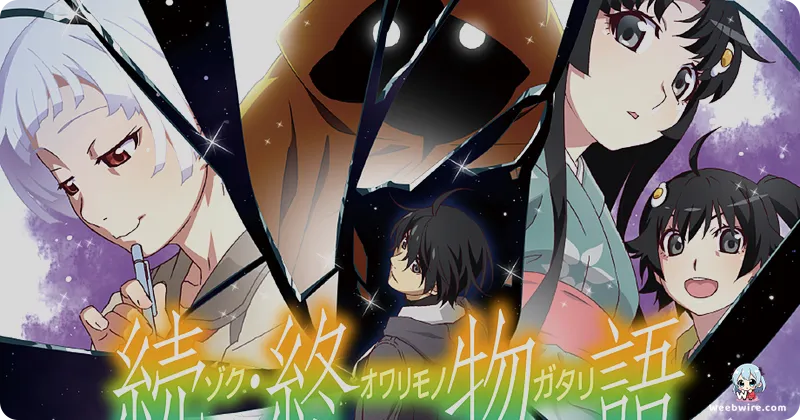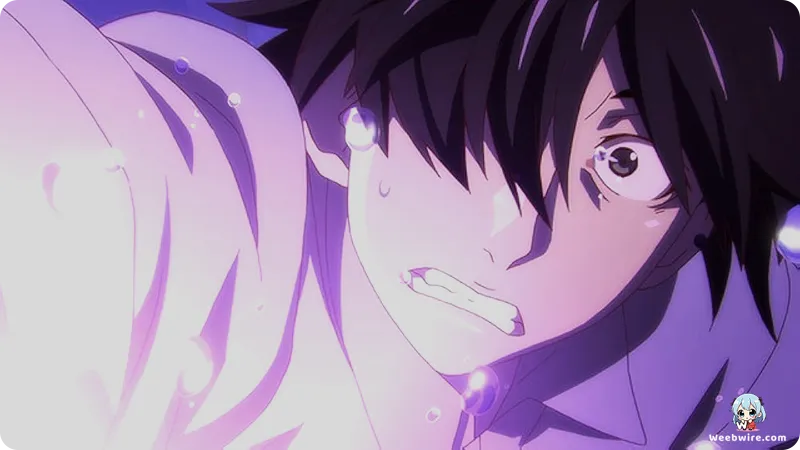Reflections of Self: Zoku Owarimonogatari's Profound Journey Through an Inverted Reality

The Monogatari series, with its intricate narratives, profound psychological depth, and famously verbose dialogue, has carved out an unparalleled niche in the anime landscape. It boldly defies conventional storytelling structures, instead relying on abstract visuals and a non-linear chronology that consistently challenges and rewards its audience. Among its many compelling arcs, Zoku Owarimonogatari stands as a truly pivotal conclusion, not only marking the end of Koyomi Araragi's high school journey but also delving into the very essence of identity and self-reflection, offering profound insights into the enduring appeal of the entire saga.
The Mirror World: A Journey of Identity
At the heart of Zoku Owarimonogatari lies the brilliantly conceived 'mirror world' concept. Araragi finds himself inexplicably trapped in an inverted reality where familiar characters exhibit traits diametrically opposite to their usual selves—the timid become remarkably bold, while the confident are plagued by insecurity. This ingenious metaphorical setting serves as a powerful catalyst, compelling Araragi, and by extension, the audience, to deeply question the very essence of identity. It explores whether one is defined solely by their outward persona or by the full, often hidden, spectrum of their possibilities. This thematic richness, subtly interwoven with Nisio Isin's signature wit and intellectual playfulness, transforms the arc from a mere external conflict into a deeply internal journey of self-acceptance and understanding.
Shaft's Visual Symphony
Shaft, the acclaimed animation studio behind the Monogatari series, masterfully translated Nisio Isin's abstract vision of the mirror world into a stunning visual experience. Employing their distinctive 'Shaft-isms'—such as the iconic head tilts, minimalist yet evocative backgrounds, and sudden, jarring cuts—they pushed the boundaries of visual storytelling. Reflective surfaces are utilized extensively, subtle perspective distortions create an unsettling atmosphere, and an altered color palette artfully conveys the inverted reality's disquieting nature. Scenes frequently employ reflections not just as visual flair but to subtly comment on characters' dual natures and internal struggles, showcasing Shaft's unparalleled ability to translate complex literary concepts into compelling and thought-provoking visuals.

The Art of Dialogue and Performance
Nisio Isin's hallmark dialogue reaches new philosophical heights in Zoku Owarimonogatari, with characters engaging in extensive, often rapid-fire conversations on psychology, existentialism, and the nature of self. This verbose 'Nisio Isin dialogue,' rich with intricate puns, wordplay, and cultural references, is undeniably the soul of the series, demanding active engagement and keen attention from its viewers. The mirror world's inverted personalities create unique conversational dynamics, offering both moments of brilliant comedic relief and profound insights into the original selves of the characters. This intricate wordplay and the sheer volume of dialogue highlight the exceptional skill of the voice actors, who deliver their lines with impeccable timing, nuanced emotional depth, and a masterful understanding of the script's complexities.
The vocal performances are, indeed, critical to the anime's profound success. Hiroshi Kamiya's portrayal of Koyomi Araragi is nothing short of masterful, as he conveys a perfect blend of bewilderment, introspection, and growing maturity, especially in his extensive internal monologues as he grapples with the surreal reality of the mirror world. Similarly, Emiri Katō's poignant and subtly altered portrayal of Mayoi Hachikuji in this inverted reality delivers some of the arc's most heartwarming and heartbreaking moments, amplifying the emotional weight of their interactions. Hachikuji's unexpected role as Araragi's guide through this perplexing dimension is particularly impactful, showcasing the depth of their bond.
Araragi's Evolution and the Series' Legacy
Beyond its captivating philosophical explorations, Zoku Owarimonogatari marks a crucial and deeply personal point in Araragi’s character growth. Previously defined by his self-sacrificing nature and his role as a rescuer of others, the mirror world forces him to confront his own motivations, his perceived flaws, and the true impact of his actions. This arc functions as a unique and deeply resonant coming-of-age story, as Araragi is compelled to accept his future, the inevitable end of his high school life, and the responsibilities that come with adulthood. It provides a surprisingly emotional and fulfilling conclusion to a significant chapter of his journey towards self-understanding, offering a sense of closure that is both poignant and hopeful.
Finally, the exceptional musical score and iconic themes consistently uphold Monogatari's artistic excellence. Each theme is uniquely crafted to reflect the character or situation, and subtle shifts in background music perfectly complement the narrative's emotional beats and intellectual shifts. These auditory elements, alongside a meticulously crafted sound design for the mirror world—which includes subtle echoes and distortions—create an incredibly immersive and distinct atmosphere. Zoku Owarimonogatari is more than just an anime; it is an experience: a masterclass in storytelling that leverages its distinctive animation, profound dialogue, intricate sound design, and deep character exploration to deliver a unique and deeply reflective conclusion to a beloved saga, consistently rewarding keen-eyed and attentive viewers with layers upon layers of meaning and emotional resonance.
Credits
Zoku Owarimonogatari
Author
Nisio Isin
Cover Art
VOFAN
Studio
Shaft
Publisher
Kodansha
Producers





